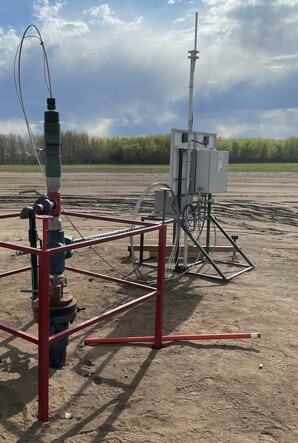- Reservoir Monitoring
- Production Optimization
- Fiber Optics
- Services
- About
- News
- Resources
- Careers
- Contact
Reservoir Monitoring
Production Optimization
Fiber Optics
Services
About
News
Resources
Careers
Contact

A remote terminal unit (RTU) is a solar powered, battery supported panel used for observation well monitoring. Petrospec has refined their RTU’s over the years to provide customers with highly-customizable solutions depending on their unique requirements.
Petrospec Engineering is well-known as a ‘turn-key’ provider of reservoir monitoring systems for oil & gas operators, and their RTU panels are no exception. These panels have quickly become the preferred data collection and transmission system in the industry—with only one point of accountability (and no outsourcing necessary).
They custom build the panels in-house for any application, and they’re able to support a variety of downhole instrumentation (e.g., any number of TC’s, and many types of downhole gauges). Final designs are flexible to meet customer needs. A standard RTU design supports a flexible number of points while delivering an extremely cost-effective solution for the most common observation well monitoring setup.
Clint Jones, Principal Engineer at Petrospec, shares that after the customer drills the well, they get involved in every aspect of the project scope. “We’re there to install the instrumentation into the well, we build the RTU’s in our shop in Edmonton and provide engineering drawings for them. After we program the panels, we often go to the field and tie the downhole cables into the panel. Finally, some commissioning steps on our part make sure the RTU panel is communicating properly with the client’s system, whether it’s their SCADA system through their radio network, or through a cell network we’ve helped set up.”
Petrospec can supply the panels directly to the customer’s E&I group, or their technicians can take them to site for tie-in and commissioning. Petrospec technicians help ensure that the panels are effectively communicating the data back to the engineers who need it. Jones has built a web app to aggregate and display data from site using a cell modem, radio network, or satellite radio—all hardware types that Petrospec’s team can support depending on customer needs.
“Fifteen years ago, a lot of well sites didn’t have cell coverage, so we did some satellite modems back then, but it’s pretty rare these days. For the most part, if you go to a site and you’re able to talk to somebody on the phone, you know you’ve got good cell coverage and we can just tie in to a cell modem,” shares Jones. The logged temperature (and depth) data requires such low bandwidth that it’s substantially less than you need for a voice call.
Customers can even compare data points across specific dates and years to better analyze the well’s temperature profile. And the panel’s energy storage and low consumption means added resiliency and lifespan for RTU’s.
For standard designs some of the components in the RTU panels are not classified for hazardous wiring locations, and therefore need to be placed at least 3 metres away from the wellhead so they can be in an unclassified area. This, and the fact that Petrospec manufactures a large number of these panels, makes them very cost competitive. Custom solutions can be configured for hazardous locations.
“We take the approach of trying to iron out best practices based on extensive field experience. We’ve been working with RTU’s for over 15 years now, so we know how failures are likely to start, and how to effectively mitigate them,” says Jones.
If you’d like to learn more about their RTU panels, contact Petrospec today to discuss how their engineering solutions can meet your needs.
About Petrospec Engineering
Established in 1997, Petrospec is proud to be a leading provider of turn-key reservoir monitoring systems for oil and gas operators. We strive to improve efficiency, meet high safety standards, and provide equipment and software for harsh environments. Our Edmonton-based company is a global innovator in downhole instrumentation, production optimization, and the accurate measurement of temperature, pressure, acoustics, and flow.
Back to news